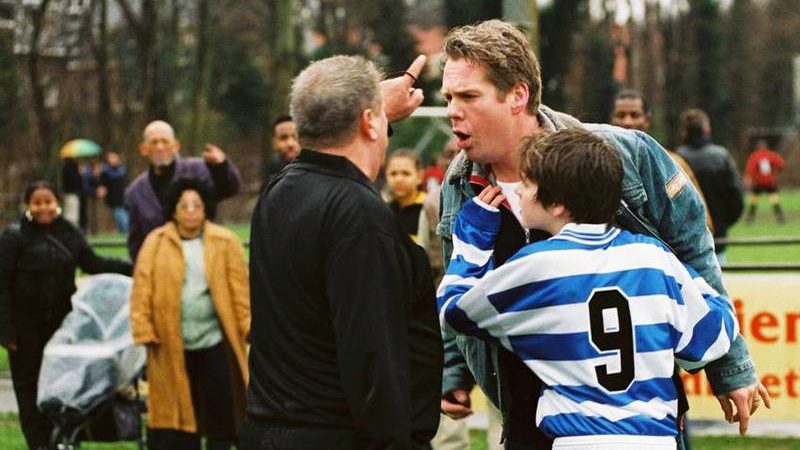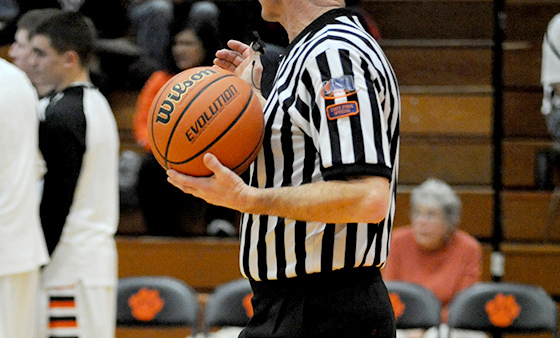Creating a ‘Captains Club’ at your school
Looking to develop your athletes into more responsible and respected leaders?
 A Captains Club (or Council) is an innovative trend catching on at several colleges and high schools across the nation and paying big dividends. Instead of just hoping their athletes step up to become effective leaders, many coaches and athletic directors are dedicating time to develop their emerging and existing leaders through Captains Clubs and Leadership Academies.
A Captains Club (or Council) is an innovative trend catching on at several colleges and high schools across the nation and paying big dividends. Instead of just hoping their athletes step up to become effective leaders, many coaches and athletic directors are dedicating time to develop their emerging and existing leaders through Captains Clubs and Leadership Academies.
And at the college level, schools such as North Carolina, Michigan, Notre Dame, Illinois, Arkansas, Pitt, Baylor, Houston, Georgetown, George Washington, Lehigh, Colgate, Lafayette and Holy Cross created comprehensive Leadership Academies with us to systematically train the leaders at their schools. This article shares a variety of ideas from Captains Clubs and Leadership Academies for you to use when starting one at your high school or college.
Creating the club
Developing a Captains Club brings five potential benefits to your school.
1. Creates strong leaders. By consciously developing your captains, you provide them with the skills and confidence necessary to be strong and effective leaders for your team and athletic department. We have seen leaders emerge in our juniors who have been a part of the program the last two yearsthey will be some of the strongest leaders we’ve had in a while, says Curtiss.
2. Targets the people who have the biggest impact on your program’s success. Your captains have such a big influence on their teammates athletically, academically and socially. They are the key catalysts and chief dominoes of your group. If you get them moving enthusiastically in the right direction, all others follow. Targeting your key leaders with the proper training and support provides you with the biggest benefit for the limited amount of time you have available.
3. Provides leaders with practical skills rather than assuming they know what to do. Todays student-athletes struggle to lead their peers. They have a hard time confronting their teammates who aren’t working hard or doing the right thing. Instead of just hoping they step up, you systematically must teach them how to be effective leaders. One of the primary reasons Curtiss created his Captains Club was, We just didn’t feel we were doing a very good job of teaching our athletes to be good leaders through their four years in high school.”Even investing as little as 15 to 20 minutes of leadership training for your captains once a month is much more than 90 percent of high schools and colleges presently provide their student-athlete leaders. It’s amazing how much coaches and athletic directors depend on their leaders to set the standards, hold teammates accountable and be their voice when they are not there, yet the vast majority provide their leaders with zero, or at best, cursory training to do so effectively.
 4. Creates and strengthens a partnership between captains, coaches and administrators. With the inherent generation gap between athletes and their coaches and athletic administrators, a Captains Club effectively bridges the age difference and creates a strong leadership team. It allows the adults to tap into and value the insights of their student-athlete leaders. At the same time, a Captains Club allows the student-athlete leaders to be mentored by respected adults who care about their student-athletes development on and off the court or field. As an athletic administrator, I want to remain in touch with our student-athletes and continue to provide them with an athletic program to provide character development and leadership training, says Latora.
4. Creates and strengthens a partnership between captains, coaches and administrators. With the inherent generation gap between athletes and their coaches and athletic administrators, a Captains Club effectively bridges the age difference and creates a strong leadership team. It allows the adults to tap into and value the insights of their student-athlete leaders. At the same time, a Captains Club allows the student-athlete leaders to be mentored by respected adults who care about their student-athletes development on and off the court or field. As an athletic administrator, I want to remain in touch with our student-athletes and continue to provide them with an athletic program to provide character development and leadership training, says Latora.
5. Provides support and camaraderie for all captains. Being a leader is a difficult and challenging job, especially for high school and college students who still value what their peers think. Many of them opt to be popular rather than to make the difficult decisions needed for the success and reputation of your program. Because there is strength in numbers, a Captains Club provides your leaders with the support and encouragement they need when making the difficult decisions and the courage to speak up and confront their less-disciplined teammates.The leaders from the Carolina Leadership Academy repeatedly mention they value the chance to discuss the challenges they face with leaders from other teams who understand their situations and offer advice and support. The other captains provide them with a sense of perspective and alternative views, and ways to handle common challenges. Our kids appreciate the ability to talk openly about difficult subjects and actually use some of the practical strategies discussed with their teams and teammates, says Curtiss.
Organizing your Captains Club
Corunna has roughly 50 in his Captains Club from freshmen through seniors. Like Carolina, Corunna divides his leaders into a freshmen group, an emerging-leaders group and a veteran-leaders group. Each of the three groups meets once a month during homeroom time.
Portage Northern High School has 25 members on its Captains Council. Each coach selects a member of the team to be a part of the council and most of the time they are juniors or seniors. The group meets once a week before school starts.
Both leadership groups are spearheaded by the athletic directors and coaches. Our coaches have been very responsive to our projects and they support our Council very much, says Latora.
North Carolina targets all freshmen for the CREED program, which meets monthly. And roughly 100 student-athletes are in each of the Rising Stars and Veteran Leaders programs. Rising Stars (primarily sophomores) meet for 75 minutes 10 times throughout the school year, and Veteran Leaders (juniors and seniors) meet every other week during the season for 60 minutes and cover material from my Team Captains Leadership Manual.
Suggestions for creating a Captains Club
In summary, here are seven steps to take to create your own Captains Club:
- Talk with your athletic director and fellow coaches. Get them excited about the key benefits of creating a Captains Club.
- Determine a core group of people (coaches, administrators, students) to spearhead and organize the program.
- Determine which and how many student-athlete leaders you want involved in the Captains Club and the selection methods and criteria.
- Decide on the key topics to cover with your leaders.
- Determine a workable meeting time and schedule.
- Solicit program feedback from captains and coaches as the program evolves.
- Acknowledge and appreciate the work of the Captains Club whenever possible via announcements, awards, etc.
Not only does creating a Captains Club help your program become more successful on and off the court or field, but you also play a huge role in providing your young leaders with important leadership skills that make a difference for them and your communities for generations to come.
For more information on developing your leaders, visit www.janssensportsleadership.





